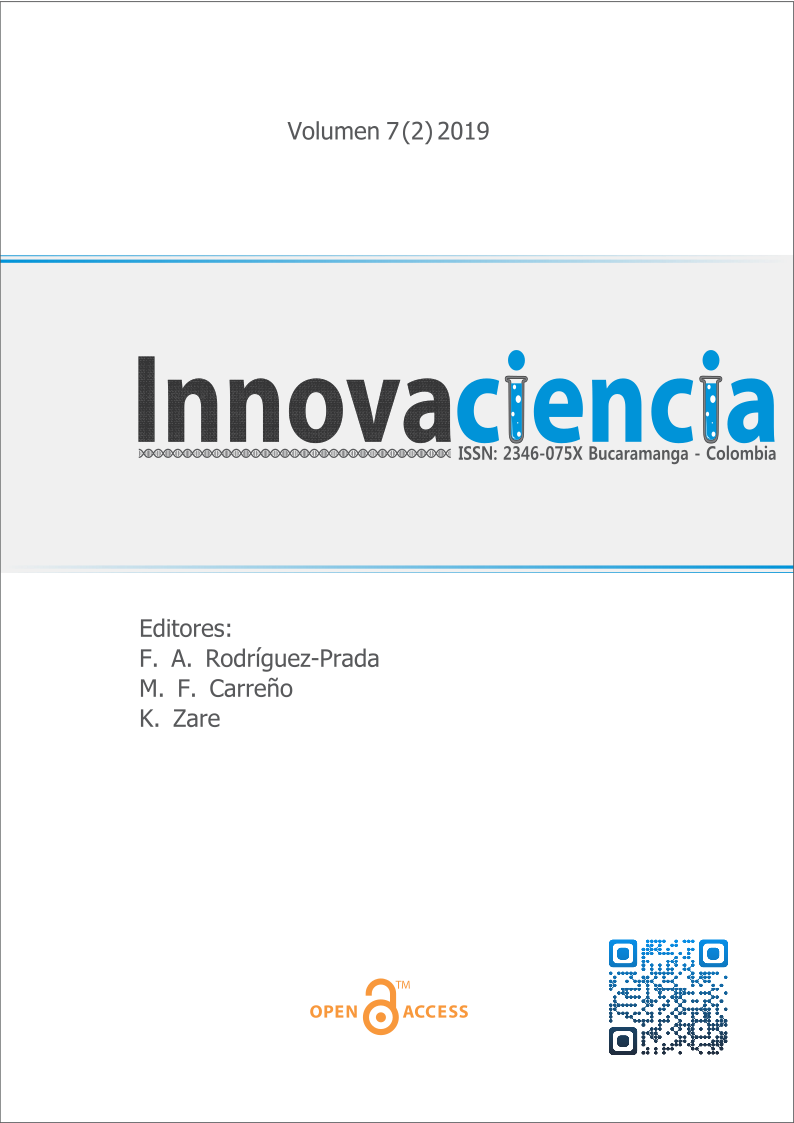Análisis semántico de color, luz y transparencia en la arquitectura islámica de Irán
DOI:
https://doi.org/10.15649/2346075X.763Palabras clave:
Islamic Architecture, Color, Light, TransparencyResumen
The subject of color, including single colors or compounds like Haft Rang (seven colors), which conveys the psychological effects
and mystical interpretation of color, has a palpable presence in the realm of arts, especially in architecture. On the other hand,
light as the most immaterial element of nature has always been present in Iranian architecture. In fact, it symbolizes transcendental
world and spiritual realm. In traditional Iranian architecture, the conceptualization of light flourished under the influence of Islamic
thought, and came to be known as the manifestation of sanctity and the spiritual world. This paper is an applied research, with an
analytical approach that seeks to conduct a semantic analysis of color, light and transparency in the Islamic architecture of Iran.
The data was collected using the library research. Also, some illustrations of colors and light in Islamic architecture of Iran were
photographed and recorded in a field study. The analysis shows that Iranian architects have employed these factors in order to plead
to the observer’s sense of beauty by forging a close association between light and color in architecture. Diversity of colors, which
is rooted in divine wisdom, gives an appreciation of the beauty and dimensions to human beings. Moreover, the results suggest that the
Iranian architects have not been concerned with phenomenal clarity to create complexity, attractiveness, and spatial diversity, which are
primarily architectural aspects, but rather have focused on cultural objectives and excellence of human beings.
Referencias
Corben, Henry, (2001). The Illuminated Man in Iranian Sufism, Translated by Faramarz Javaherinia, Vol. I, Golban.
Afshar, Iraj, (1999), Color Types in Persian Language, Linguistics Journal, 14 (1 & 2).
Mansoori, Mehrzad, (1996), Study of the color terms in Farsi language, Journal of Linguistics, 13 (1&2)
Ghazaei, Muhammad, (1997), Sensory perception from the viewpoint of Ibn Sina, Printing Islamic Propagation Office of the Qom Seminary.
Sharif Mahallati, Moayed, (1958), Seven in the world culture, Shiraz.
Ahmadi Maleki, Rahman, (1999), Colored Figures in Haft Peykar. Fiction Literature Quarterly, 8 (52).
Ibn Rastah, Ahmad, (1986), Al-Alaq Al-Anfiseh, Translated by Hossein Gharchanlou, Amir Kabir Publications.
Sajjadi, Mohammad Ali, (1990), Righteous cloak and cloak of Sufism. (First Edition) Elmi Farhangi Publication
Qiyabkelou, Zahra, (2012), Basics of building pPhysics 3, Electrical Lighting, Amir Kabir University of Technology, Jahad Daneshgahi Publication, First Edition.
Forty, A. (2004). Transparency, The disconnecting concept in architecture, words and buildings. London: Thaes & Hudson ltd.
Dehkhoda, Mohammad Taghi, (2007), Dehkhoda Dictionary, Tehran, University of Tehran.
Giedion, Sigfroud. (1962). Space, time, and architecture. Cambridge Press.
Suhrawardi, Sheikh Shahabodin Yahya, (1998), Hikma al-Ashraq, Translated by Seyed Jafar Sajjadi, Tehran University Press, Tehran.
Mirmiran, Syedadi, (1998), Transition from material to spirit, Architecture and Urbanization, No. 42: 100-94.
Ascher barnstone, D. (2003). Transparency: a brief introduction. Journal of Architectural Education 56
Tabatabai, Zahra and Zahra Abbasi, (2016), Semantic analysis of visual effects of light in the interaction between Khalidah's wisdom and Iranian architecture and urbanism, Journal of Urban Management, No. 42, 106-87.
Haeri Mazandarani, Mohammad Reza, (2009) The role of space in Iranian architecture, Tehran: Office of Cultural Research.
Ardalan, Nader and Laleh Bakhtiar, (2012), Sense of harmony (the role of tradition in Persian Architecture), translated by Hamid Shahrokh. Isfahan: Khak.
Styrene, Henry, (1998), Isfahan, the image of Paradise, translated by Jamshid Arjomand. Tehran: Farzane Rouz Publication.
Burckhardt, Titus, (1990) Holy art, principles and methods, translated by Jalal Sattari. Tehran: Soroush.

Descargas
Publicado
Cómo citar
Descargas
Número
Sección
Licencia
Todos los artículos publicados en esta revista científica están protegidos por los derechos de autor. Los autores retienen los derechos de autor y conceden a la revista el derecho de primera publicación con el trabajo simultáneamente licenciado bajo una Licencia Creative Commons Atribución-NoComercial 4.0 Internacional (CC BY-NC 4.0) que permite compartir el trabajo con reconocimiento de autoría y sin fines comerciales.
Los lectores pueden copiar y distribuir el material de este número de la revista para fines no comerciales en cualquier medio, siempre que se cite el trabajo original y se den crédito a los autores y a la revista.
Cualquier uso comercial del material de esta revista está estrictamente prohibido sin el permiso por escrito del titular de los derechos de autor.
Para obtener más información sobre los derechos de autor de la revista y las políticas de acceso abierto, por favor visite nuestro sitio web.















